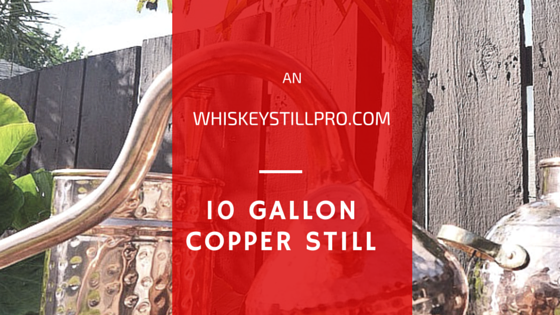 After
choosing to buy whiskey stills online, the whiskey enthusiast is
faced with the daunting task of choosing other pieces of equipment
and selecting the right ingredients for crafting spirits. What makes
whiskey such a unique spirit are those ingredients used as part of
the fermentation and distillation processes. In particular,
fermented grain, water, and yeast make up the essential components of
true whiskey. While this blend of ingredients can vary somewhat
depending upon the region wherein the whiskey is produced (Scotland,
for instance, has a rich, storied tradition in the production of
whiskey), you’ll always see one form or other of these three main
ingredients. However, finding cheap whiskey stills and selecting
these ingredients must be painstakingly detailed to ensure that the
appropriate flavor and robustness come to the fore. Otherwise, the
unfortunate blend will yield a batch of spirits that will in no way
satisfy the aims of the whiskey enthusiast.
After
choosing to buy whiskey stills online, the whiskey enthusiast is
faced with the daunting task of choosing other pieces of equipment
and selecting the right ingredients for crafting spirits. What makes
whiskey such a unique spirit are those ingredients used as part of
the fermentation and distillation processes. In particular,
fermented grain, water, and yeast make up the essential components of
true whiskey. While this blend of ingredients can vary somewhat
depending upon the region wherein the whiskey is produced (Scotland,
for instance, has a rich, storied tradition in the production of
whiskey), you’ll always see one form or other of these three main
ingredients. However, finding cheap whiskey stills and selecting
these ingredients must be painstakingly detailed to ensure that the
appropriate flavor and robustness come to the fore. Otherwise, the
unfortunate blend will yield a batch of spirits that will in no way
satisfy the aims of the whiskey enthusiast.
American
whiskeys (even those produced by hobbyists using cheap whiskey
stills) are usually produced with rye, barley, wheat, and, most
famously, corn. Usually, the American whiskey is then aged in white
oak barrels where it will be kept for a predetermined number of years
until it is finally imbibed by the consumer. However, some
distillers have also taken to utilizing other ingredients like
millets, oats, rice, and just about every other grain you can
imagine. Regardless of the grains chosen, the total amount of grains
and/or variation in grains used within the mixture is known as the
grain bill.
Even
with so many grains to choose from, there exist variations within the
actual grains utilized in the grain bill; for instance, they can be
flaked, crushed, or even finely ground into meal before being
included within the mixture. Flaked grains are the preferred grain
of choice for many distillers who buy whiskey stills online due to
their flexibility in terms of utilization. They are unmalted grains
which have been crushed, moistened, cooked, and finally flaked
between rollers. While most distillers utilize flaked grains to
complement their whole grain recipes, hobbyists can avoid a great
deal of the work involved in crushing grains by choosing instead to
work only with flaked grains. Doing so will save some time, money,
and efforts. Though these grains still need to be mashed, the
processing used for flaked grains isn’t nearly as tedious and
painstaking as that which is found with preparing and crushing whole
grains.
However,
one thing that should be avoided when choosing grains is utilizing
any which contain seeds. Instead, the grains selected should be
dried, food grade grains. Those which were intended to be used later
on for seeding purposes often contain pesticides and fertilizers
which make them potentially harmful to ingest. Indeed, even after
the distillation process in your high-quality, cheap whiskey stills,
the pesticides and fertilizers are likely still present within the
final product. Fortunately, pesticide free grains can easily be
found at health food shops, homebrew stores, and wholesale food
distributors.
Ultimately,
the selection of grains can have a major impact upon the final yield
in your high-quality, cheap whiskey stills. So, before making a
decision on which grains to purchase, it is always important for the
home distiller to learn as much as possible about the grains. Do
your diligence and by carefully planning out what the drink should
eventually become at the conclusion of the process. Then, once the
grains are collected, the next steps can finally be put into action:
the malting and mashing phases. These steps are critical and must be
done carefully before the ultimate distillation process within your
cheap whiskey stills. Suffice it to say that, while doing research
before having to buy whiskey stills online can be tedious and long,
there is no mistaking the kind of work which needs to be done to
select and prepare your ingredients before finally putting your cheap
whiskey stills to use.
















